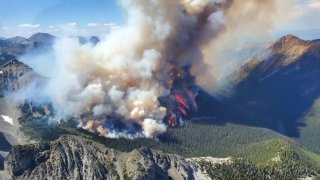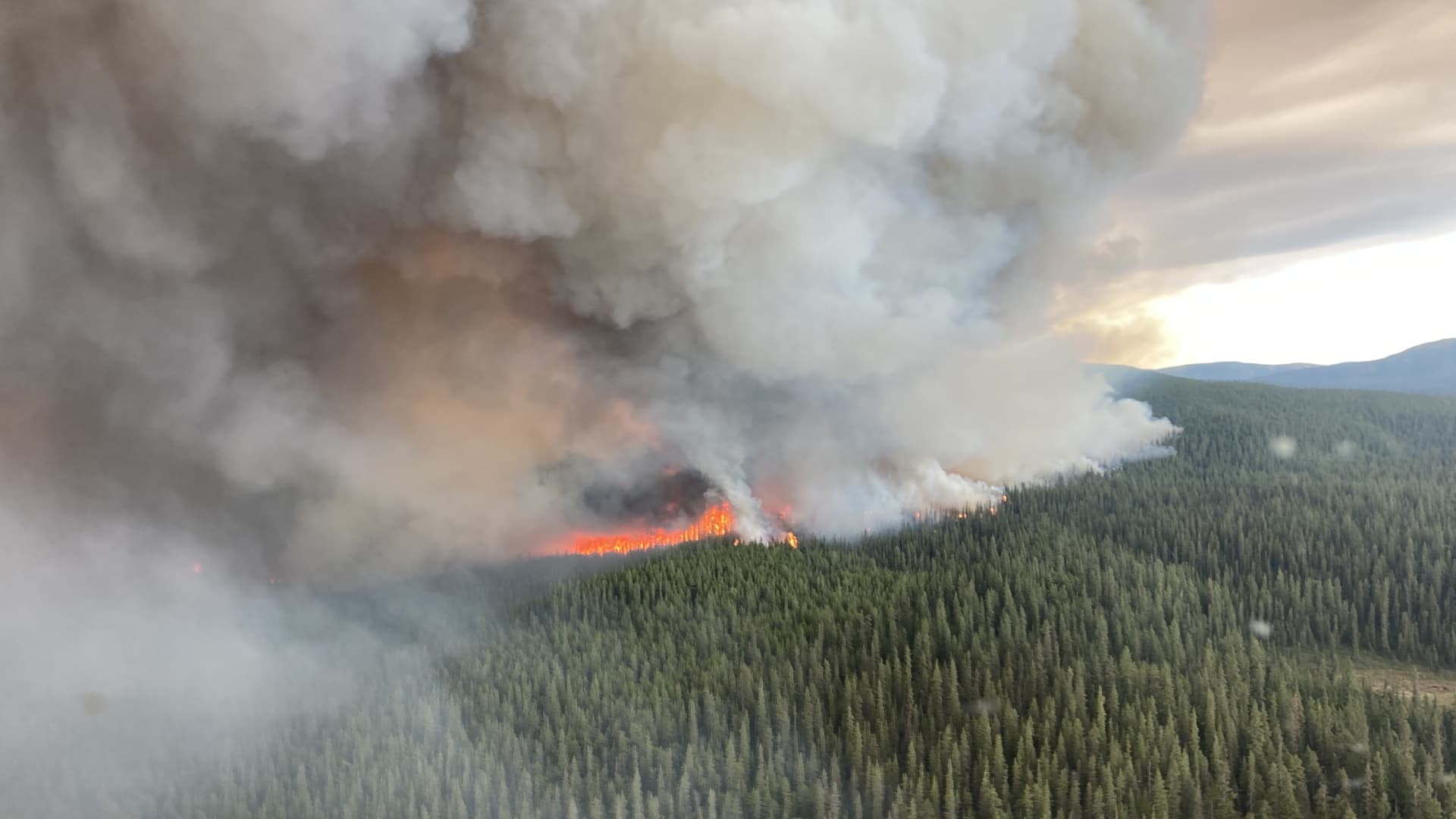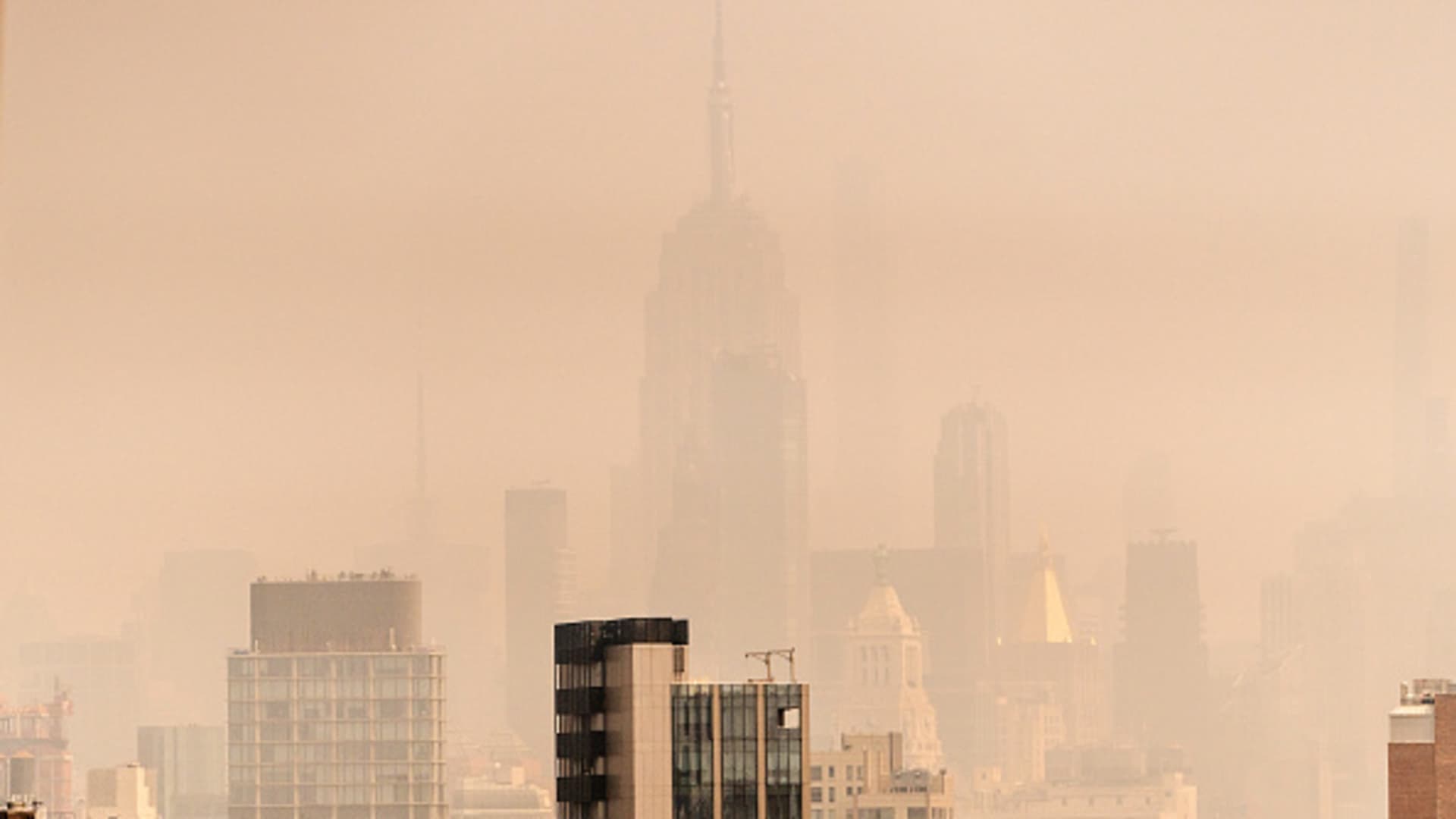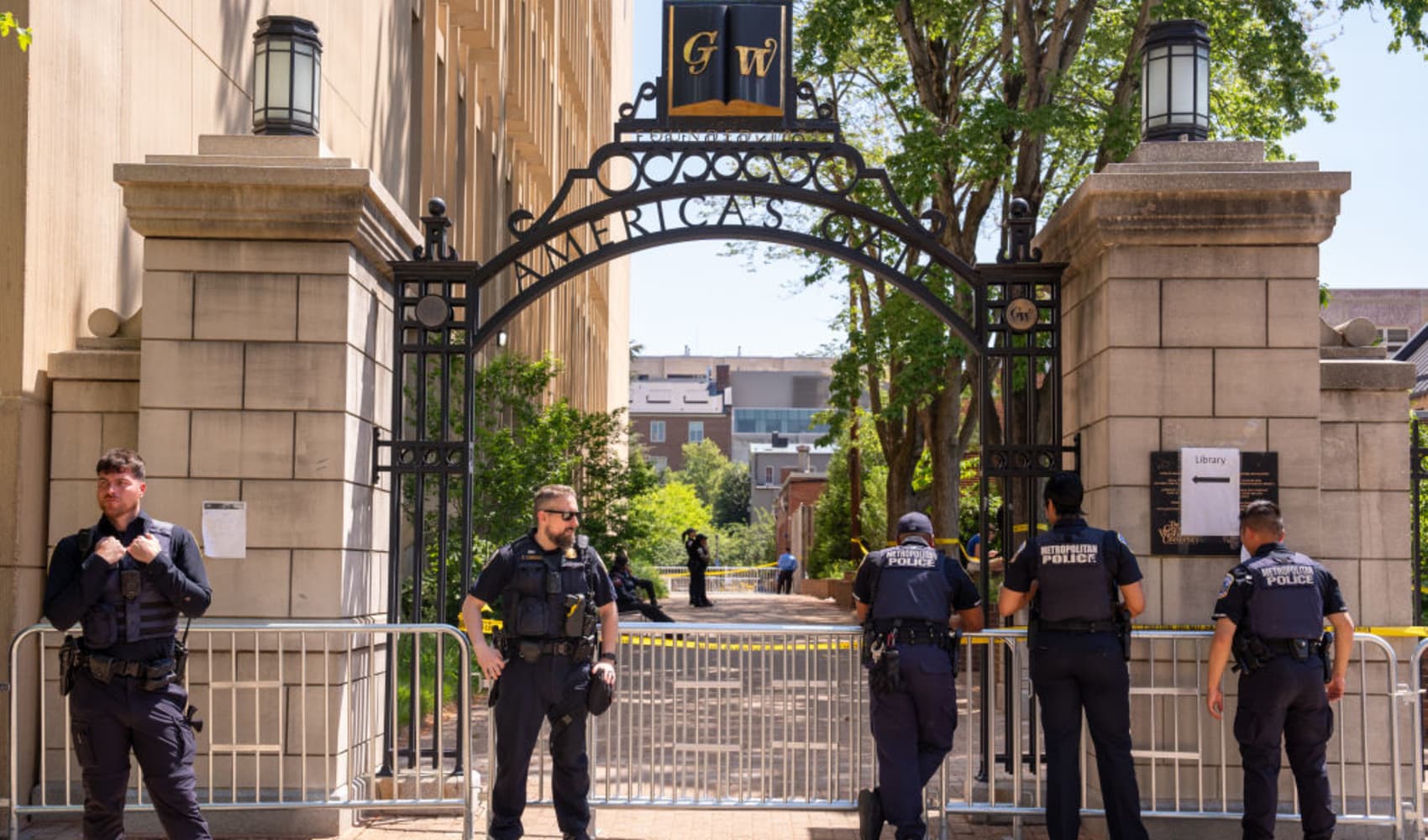
- On June 27, Canada surpassed the record set in 1989 for total area burned in one season when it reached 7.6 million hectares, or 18.8 million acres
- Fort Good Hope, at about 66 degrees north latitude in the Northwest Territories of Canada, set a record high of 99.9 degrees Fahrenheit in early July for the warmest Canadian temperature at that latitude.
- The combination is forcing Canadians to re-engineer their relationship with wildfires and plan for a future where more wildfires are part of the new reality.
Record high temperatures and a record fire season are hitting Canada at the same time this summer, leading to an unprecedented combination of heat, fire and dangerous smoke plumes.
"I can't emphasize enough just how terrifying this moment is on our planet. With global temperature records breaking and fires and floods raging around the world, our house is truly on fire," Kristina Dahl, principal climate scientist at the Union of Concerned Scientists, told CNBC.
Climate change, caused by greenhouse gas emissions, is making the planet hotter and also increasing the potency of the ingredients that are necessary for wildfires to burn. Even if humans stopped burning all fossil fuels today, the carbon dioxide already in the atmosphere is going to continue heating the planet for decades to come.
"If I had a magic wand and said, 'no more greenhouse gases being produced from human activities as of now,' we will continue to warm for 30 to 50 years," explained Michael Flannigan, the research chair for predictive services, emergency management and fire science at Thompson Rivers University British Columbia.
That means what's happening now is unprecedented, but it's also a harbinger of what's coming.
"This is the new reality, not the new normal, because we're on a downward spiral," Flannigan told CNBC.
Money Report
Record-breaking wildfires with no end in sight
On June 27, Canada surpassed the record set in 1989 for total area burned in one season when it reached 7.6 million hectares, or 18.8 million acres, a communications officer for Natural Resources Canada, told CNBC.
Feeling out of the loop? We'll catch you up on the Chicago news you need to know. Sign up for the weekly Chicago Catch-Up newsletter here.
The total has since increased to 9.3 million hectares, or 23 million acres, which is about the size of South Carolina. The average is around 2.2 million hectares, or 5.4 million acres, or about the size of Massachusetts.
"The current wildfire season in Canada has been astounding and record breaking," Dahl told CNBC.
Soon, the total amount of land burned this year will hit the equivalent of Maine, Flannigan said.
"We're used to getting fires in the West, or the East, or in the north, or the central — but not the whole country at the same time," Flannigan told CNBC.

And the fire season is not even close to over. There are currently 908 active fires burning in Canada, and 576 of those are classified as "out of control," according to data in a real time dashboard operate by the Canadian Interagency Forest Fire Centre as of 2:15pm EST on Thursday.
"I'm not sure where we're going to end up with this because it keeps keeps on burning," Flannigan told CNBC. "Some of these fires are huge. And they will burn all summer, all fall, and some of them will burn through winter. Underground they smolder and even though you can have snow on top, they keep burning underground. And then spring, the snow melts, stuff gets hot, dry and windy. They pop to the surface and start spreading again."
Record heat turns vegetation into kindling
Earlier in July, the Earth recorded its hottest average day since records began -- then repeated the feat three times in four days.
Temperatures in Canada are no exception. Earlier this year, Fort Good Hope, at about 66 degrees north latitude in the Northwest Territories, reached 37.4 degrees Celsius — more than 99 degrees Fahrenheit — setting a record for the warmest Canadian temperature at that latitude, according to the Canadian government. Subsequent readings in nearby communities were even hotter, according to news reports.
"We're in uncharted waters here," Dahl told CNBC.
"Since May we've seen a pattern of heat domes developing in parts of North America," Dahl told CNBC. A heat dome is a weather event that occurs when the atmosphere traps hot air like a lid or a cap, as the National Oceanic and Atmospheric Administration describes it. "These zones of extreme heat tend to persist for long stretches of time — weeks in some cases. The heat dome that developed in May was linked to the development and spread of the fires in Alberta that kicked off the start of Canada's record-breaking fire season."
"I've never seen it start so early that far north," Flannigan told CNBC. Before he started working in academia, Flannigan worked for the Canadian Forest Service for 30-plus years.
Hotter weather dries out vegetation, which serves as fuel for the wildfires.
"The warmer it gets, the atmosphere gets more efficient at sucking the moisture out of the fuels," Flannigan told CNBC. "It's not a linear increase, it's almost exponential."
Also, warmer temperatures lead to more lightning, Flannigan said. In Canada, about half of wildfires are started by lightning, but they are responsible for 80% to 90% of the land burned, since these areas tend to be remote and harder for firefighters to reach.
A future of more fire and smoke
Three key ingredients for a wildfire spread are fuel, ignition and weather, Sarah Burch, a climate change professor at the University of Waterloo and the executive director of the Waterloo Climate Institute, told CNBC.
"While wildfire is a natural feature of healthy ecosystems, climate change affects all three of the factors" that cause wildfires, Burch told CNBC. So, too, does land management. For example, the mountain pine beetle is killing trees and turning them into fuel for wildfires, Burch told CNBC. And long-duration droughts also make forests more flammable.
"This means that we expect fires to increase in frequency and intensity in the future," Burch told CNBC.
People will have to learn to live alongside those wildfires.

"This is a common misconception of people that fire management can stop all fires all the time. Obviously, that's not true," Flannigan said.
If firefighters arrive when a fire is still small, they can put it out. But sometimes a fire can balloon into a high-intensity blaze in as little as 15 minutes. When a wildfire becomes a "crown fire," meaning it jumps from tree top to tree top, "the horse has left the barn," Flannigan told CNBC. "It's too late. You've missed your window."
Some fire mitigation techniques can work to slow the back end of a fire that's already burning at full intensity, but when "that head is just racing across the landscape, you just have to get out of the way."
This means more smoke from these wildfires traveling to other parts of the globe, too. Earlier in July, wildfire smoke from Canada blanketed much of the United States mid-west and Eastern seaboard.
There is no silver bullet to solving this problem, Flannigan says. Drones and artificial intelligence can help scientists track and monitor fire movement, but they are tools, not solutions. The only long-term solution is to reduce greenhouse gas emissions on a global scale to mitigate the effects of climate change.
"I think there's still time if we get our act together as a global society to deal with this. And sometimes people need a bloody nose or two before we change our behavior. We can change. And I'm hoping that we're getting the bloody noses and now we'll actually do something about fossil fuels," Flannigan said.






